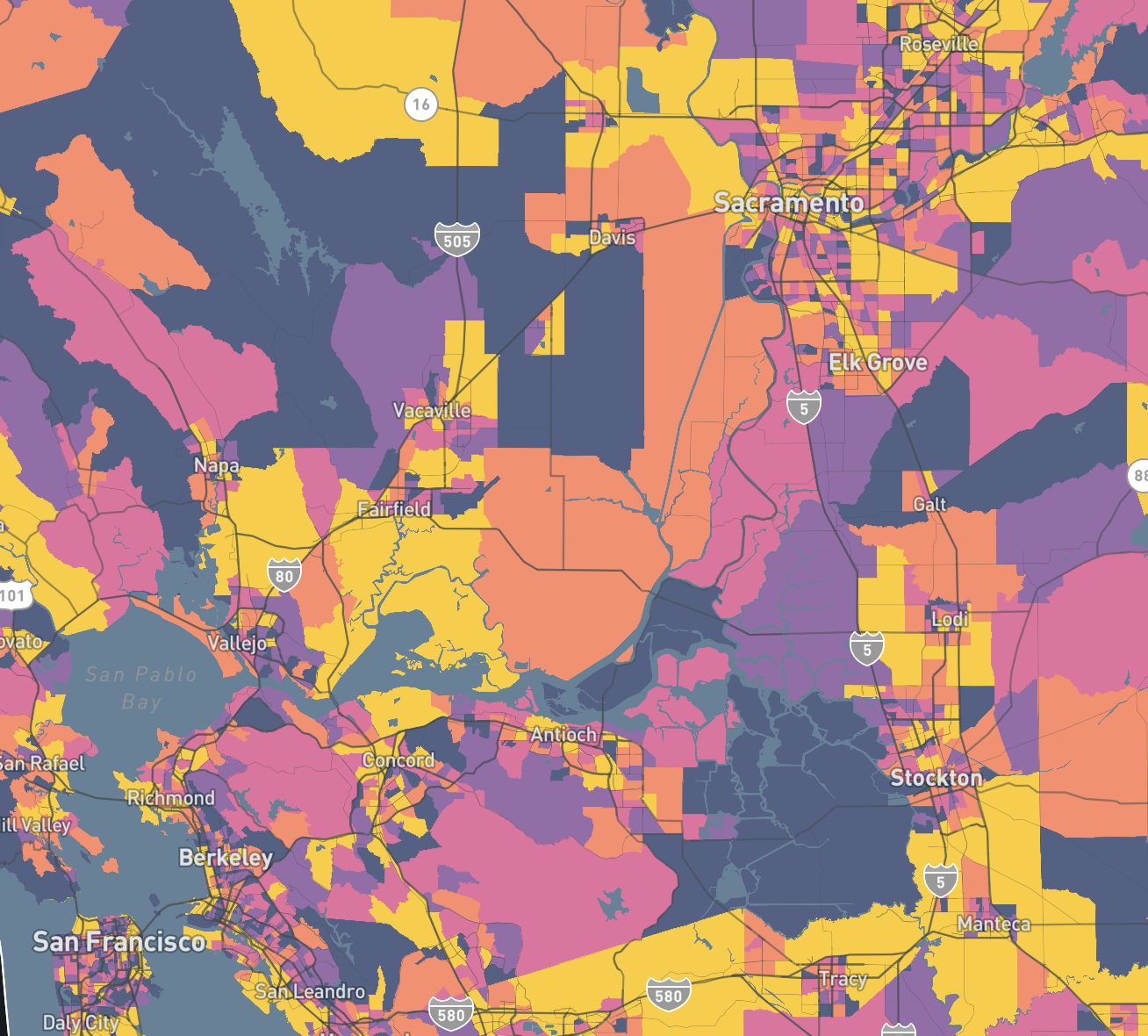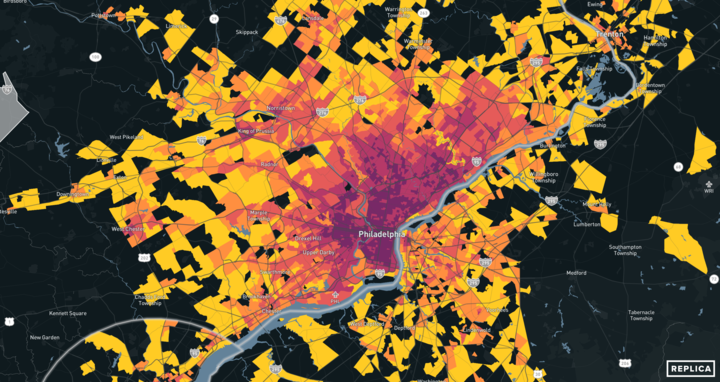More than 10 billion miles are driven every day on US roads. Even with increasing electric vehicle adoption and rising fuel standards, that’s a lot of gasoline used every day. Assuming a very (very) optimistic average fuel economy of 35 miles-per-gallon, that still translates to more than 285 million gallons consumed every day — enough to fill 430 Olympic-sized swimming pools every 24 hours.
The national number may be striking, but for policy planners and traffic engineers in departments of transportation around the country, local data is far more valuable. This is especially true if it’s possible to get data for individual roadways, and isolate out miles driven, gasoline consumed, and emissions generated based on vehicle type and travel speeds.
With Replica’s detailed datasets, we make it easy to do just that, and to inform local decisions that would help reduce congestion, increase air quality, lower emissions, and decrease the amount of money families need to spend on gas.
In this post, we’re exploring the unique gasoline-usage profiles of specific roads from around the country. For more information on the methodology we used, see the note at the end of this post.
Our analysis focuses on one-mile stretches on the following four highways. To see each segment on a map, and to see the directional speed profiles for each segment as they are available in the Replica platform, scroll to the bottom of this post.
- I-87 in New York, where the Mario Cuomo Bridge crosses the Hudson River
- I-25 in Denver, north of the Central Business District
- I-10 in Phoenix, west of the airport and north of downtown
- The Santa Monica Freeway in Los Angeles, between Santa Monica and Downtown
Even to traverse just these single-mile stretches, the amount of gasoline consumed can be surprising:

Since the length of each of these one-mile roadway segments is of course the same, we can dig into what makes some roadways more gasoline-intensive than others. For our analysis, we looked at three factors:
- The number of vehicles that use the roadway each day. This factor is the most straightforward — the more vehicles that utilize the roadway each day, the more gasoline used.
- The breakdown of personal automobiles versus commercial trucks. Heavy trucks use, on average, 6x more gasoline than personal automobiles to travel the same distance. Roads where commercial trucks make up a higher percentage of vehicles use proportionally far more gasoline than roads with similar total volumes, but fewer trucks.
- Typical speeds and the amount of congestion. Advertised highway vehicle fuel efficiency is usually calculated at 55 mph, the speed at which efficiency is best. As average speed increases above 55 mph, fuel efficiency drops, and as speed drops below 30 mph in stop and go traffic, it decreases even more precipitously. For this analysis, we grouped vehicles into three speed buckets: (1) 30 - 70 mph free flow speeds (most efficient); (2) 70+ mph free flow speeds (medium efficient); (3) <30 mph congestion (least efficient)
The chart below breaks down the daily traffic on each of the four road segments.

As expected, total vehicle volume is the biggest predictor of gasoline usage. But both vehicle type and vehicle speed make a meaningful difference. For example, while the stretch of I-87 in NY has only 42% of the vehicle traffic as the stretch of I-10 in CA, it uses 47% of the gasoline, primarily due to the greater number of heavy-duty trucks on the roadway. And the I-25 stretch in Denver has 91% of the total traffic as the I-10 stretch in Phoenix; but because it has far less congestion, uses only 86% of the gasoline.
These types of analyses can also help quantify the impact of influencing average speed, or rerouting certain types of vehicles. For instance, if all free flow traffic on the stretch of I-10 in Los Angeles was brought below the 70 mph threshold, it could reduce gasoline usage on just that one mile stretch by almost 40,000 gallons a year.
--
Methodology Note: For this analysis, we utilized Replica data for a typical Thursday in Spring of 2023 to obtain vehicle volumes, vehicle speeds, and the breakdown of vehicle types (gas-powered cars, EVs, medium-duty trucks, and heavy-duty trucks). We utilized Department of Energy (link) and Transportation Research Board (link) sources to estimate typical fuel efficiency for each type of vehicle at each of the 3 speed buckets described above. The estimates we used for calculations are included in the following table:









